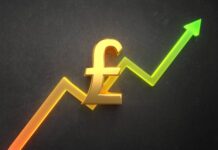Markets
The massive core bond yield surge eased or reversed after having experienced the worst month in many decades. European swap yields registered the biggest monthly jump since the creation of the EMU, even after giving up 5.7 (30y) to 11.3 bps (5y) yesterday. German Bunds hugely outperformed US Treasuries with yields 6.6 (30y) to 10.9 bps (5y) lower. Short-term US yields’ late-session last hurrah brought them back in positive territory for the day. The 5y closed 2.9 bps higher. Q1 thus ended with a 30y/5y inversion as yields at long tenors finished a little less than 3 bps lower.
Several elements could explain yesterday’s moves. First, the decline in oil prices amid reports the US will release 1mln barrels a day for six months from its Strategic Reserve, resulting in easing inflation expectations. Second, the weak equity sentiment with Europe and Wall Street shedding about 1.5%. Third: end-of-quarter rebalancing. Some of the recent trends on currency markets reversed too at the last day of the quarter.
The USD and euro started on equal footing but the odds soon turned in favour of the greenback. EUR/USD retreated from its recent bounce to 1.1067, below 1.1121 support. The Japanese yen outperformed peers. USD/JPY eased slightly to 121.70, EUR/JPY give up more than a big figure to 134.67. The Swiss franc also got reprieve, rallying 0.9% to the euro and testing EUR/CHF 1.02 support. Sterling caught a better bid as well. This prevented EUR/GBP from taking out 0.85 and instead finish lower at 0.842. Asian-Pacific stocks trade soft in the wake of the US performance. China is one of the few exceptions (+1%). The private (Caixan) manufacturing PMI slipped deeper in contraction territory (48.1) than expected but was no big surprise after official data showed the same yesterday.
Japanese corporate assessment (Tankan) of both current conditions as well as the outlook for Q2 weakened across the board. Soaring prices and geopolitical uncertainty offset a hoped-for rebound after Covid restrictions were eased in March.
The yen is under pressure this morning though that’s probably more the result of rising core/US yields (>4 bps). Equity futures suggest a pale green open. The euro and dollar again start with similar momentum. Both face key economic indicators later today.
EMU inflation in March is expected at a record 6.8% y/y. Even after already being revised higher, national readings earlier this week make an upward surprise possible still (7%?). March payrolls, expected at a strong 490k, are due in the US. US money markets expect 200 bps of additional tightening by the Fed this year and that may suffice for now. Meanwhile, we continue to believe there is room left to price in an ECB catch-up move, especially after yesterday’s correction. This should support EMU yields in particular and EUR/USD. A weekly close above 1.1121 should bring technical comfort to the currency pair.
News Headline
The Czech National Bank yesterday decided to raised its policy rate by 50 bps to 5.0% in a 5-2 vote. Two members preferred the keep the policy rate unchanged. However, at the press conference, governor Rusnok indicated that a 75 bps hike was also discussed. The Board sees the risks and uncertainties compared to the winter forecast as being markedly inflationary in the short run. These risks also require significantly tighter monetary policy and probably for longer than expected previously. Inflation (11.1% Feb) was already significantly higher than expected before the war in Ukraine amid higher food prices and administered regulated prices. Price pressures are being exacerbated by the war. Inflation now is expected to rise further in spring and remain very high for the rest of the year. The CNB remains prepared to raise rates further to restore price stability as soon as possible. The impact of the war is expected to cut expected growth in half (was 3%). With respect to FX interventions, the CNB indicated they mainly intended to address excessive koruna fluctuations. There was no deep debate on using the koruna as a policy tool. Rates are the preferred tool, but the koruna is no taboo. De koruna hovered up and down after the policy announcement, but finally closed marginally stronger near EUR/CZK 24.40.












